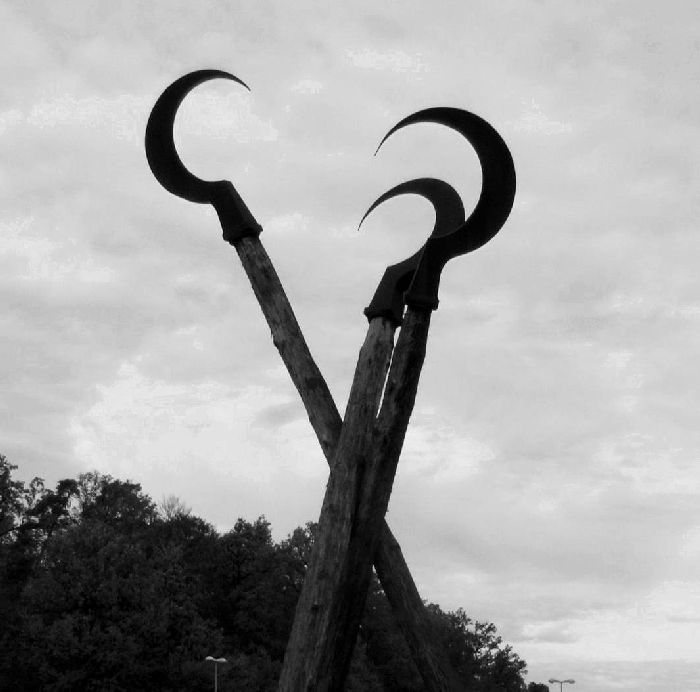Pueblo Colorado Medal of Honor Memorial
Pictures and text by T. Milroy
This site is located in Pueblo, Colorado outside the city's convention center. It is dedicated to the memory of the four Medal of Honor recipients that came from the city in the years between the Second World War, and the Vietnam Conflict. The memorial is made up of four statues and numerous plaques that detail the history of not only the four local recipients, but also all of the nation’s recipients dating back to the revolution. On the four statues of local awardees one can find place and date of birth, name and the citation issued by the Army to correspond to the award. The site ties in with the town motto "Home of Heroes".
This memorial is best viewed as both a memorial to local heroes, and a medium by which a town has tried to capitalize on one of the better know aspects of its history. For a town of its size to have four Medal of Honor awardees is quite unusual. The facts surrounding its construction bring into question the exact nature of the memorial creator’s goals.
This memorial is one of many that portray war in a somewhat positive and whitewashed light. Little reference is made to the sacrifices involved in warfare, and much effort is made to present the local recipients of the award in a heroic manner without reflecting on the carnage involved in any situation that results in the modern award of the MOH (although the Department of the Army citations for heroism on the part of the awardees are on display). Prominently displayed in several locations are references to the town of Pueblo, as if the people of the region, as much as the men portrayed, won the award. Furthermore the close proximity of the monument to the largest hotel in town, and the convention center, give the monument the feel of a tourist attraction, more than a somber place of reflection. The difference between this memorial and others that are similar (a good example is the Bull Simons statue at Ft. Bragg) is the slightly uneasy feeling that it leaves with the viewer. As if the legitimate (and well documented) sacrifices made by these men is somehow being used as a prop to boost the local economy. Also a list of donors who paid for the memorial is found on a marble slab to the front of the monument, giving the site the aura of being for urban renewal more than a legitimate honoring of the men in question.
Were this monument located in front of the county courthouse or, city hall it would be a classic piece of Americana. This memorial seems to be more concerned with the portrayal of the town. Pueblo is similar to many old steel towns that saw a decline in their fortunes in the 1970’s and 1980’s. It has a poor economy, many high school graduates leave, and the per capita crime rate in the area is one of the highest in the state. The memorial was constructed well after the town’s heyday (construction began in 1998) and coincided with the adoption of a new town motto “Home of Hero’s”. While the men who appear here are well deserving of the monument, one must ask why the monument is located where it is (in front of the convention center) as opposed to a park or school. The site also makes no mention of the total number of Pueblo’s citizens who enlisted, something that is strange given the “Home of Heroes” motto.
In the final analysis one must come to the conclusion that this memorial is well designed and beautiful. If it where in front of a school, park, or government building it would be a touching monument to men who served their nation well. As it is, the fact that it sits next to the Marriot and adjacent convention center, and has a list of donors prominently placed on site, leaves the viewer with the bitter taste of crass commercialism in their mouth despite their profound respect for these great heroes of America’s wars.






